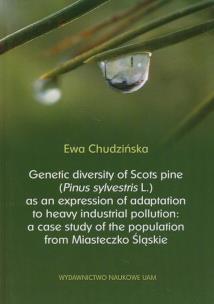- Regulamin
- Koszty dostawy
- Kontakt
- Dziś w ofercie 241 442 produkty
KSIĄŻKI
- Albumy
- Beletrystyka
- Biografie
- Dla dzieci i młodzieży
- Edukacja
- Ekonomia i biznes
- Ezoteryka
- Historia
- Informatyka
- Kalendarze
- Komiksy
- Kryminał i sensacja
- Kultura i sztuka
- Literatura faktu
- Literatura kobieca
- Literatura piękna
- Medycyna
- Nauka języków obcych
- Nauki humanistyczne
- Nauki przyrodnicze
- Nauki ścisłe
- Podręczniki
- Poradniki
- Prawo i administracja
- Przewodniki i podróże
- Psychologia
- Religia
- Sport
- Technika
- Zdrowie i uroda
ZABAWKI
- Artykuły dla niemowląt
- Bączki
- Bujaki i skoczki
- Ciągnij / pchaj
- Dla niemowlaka
- Grzechotki i gryzaki
- Karuzele i pozytywki
- Maty i centra zabaw
- Projektory i lampki
- Sortery i piramidki
- Zabawki
- Edukacyjne i kreatywne
- Figurki
- Klocki
- Lalki
- Pojazdy
- Pluszaki i maskotki
- Sport i rekreacja
- Zabawa w dom
- Zabawki drewniane
- Puzzle
- Do 200 elementów
- 201-500 elementów
- 501-1000 elementów
- Ponad 1000 elementów
- Puzzle 3D
ART. PAP
- Artykuły biurowe
- Artykuły piśmiennicze
- Bloczki i kartki samoprzylepne
- Dziurkacze
- Kalkulatory
- Nożyczki i nożyki
- Skoroszyty
- Teczki
- Wizytowniki
- Zszywacze
- Artykuły szkolne
- Akcesoria szkolne
- Modelowanie
- Notatniki i zeszyty
- Piórniki
- Plecaki i torby
- Pojemniki na śniadanie
- Pomoce naukowe
- Przybory matematyczne
- Przybory rysunkowe
- Upominki i gadżety
- Akcesoria do książek
- Artykuły balowe
- Breloki i zawieszki
- Drobiazgi, różności
- Kubki
- Oferta Świąteczna
- Papeteria, kartki i naklejki
- Skarpetki Many Mornings
- Upominki
GRY
MULTIMEDIA
- Audiobooki
- Beletrystyka
- Biografie i wspomnienia
- Dla dzieci i młodzieży
- Fantastyka
- Filozofia i religia
- Historia
- Literatura faktu i reportaż
- Poradniki
- Sensacja i kryminał
- Filmy DVD/BD
- Animowane
- Biograficzne
- Fantasy
- Horrory
- Komedie
- Romanse
- Science Fiction
- Sensacyjne / kino akcji
- Thrillery
- Muzyka CD
- Alternatywna
- Blues
- Dla dzieci
- Jazz
- Klasyczna
- Piosenka aktorska i poetycka
- Pop
- Rock
- Świąteczna i kolędy
- Akcesoria GSM
- Głośniki
- Kable i adaptery
- Klawiatury
- Myszy
- Słuchawki
PROMOCJE
ZDROWIE
LEGO

Genetic diversity of Scots pine (Pinus sylvestris L.)
Autor: Chudzińska Ewa
Wydawca:
Wydawnictwo Naukowe UAM
ISBN:
9788323225751
EAN:
9788323225751
oprawa:
Miękka
podtytuł:
as an expression o f adaptation to heavy industrial pollution: a case study of the population from Miasteczko Śląskie
format:
17.0x24.0cm
język:
angielski
liczba stron:
132
rok wydania:
2013
(0) Sprawdź recenzje
Opis produktu
Zasady bezpieczeństwa
The aim of the study was to explain why some Pinus sylvestris trees are more resistant to stress factors than others and whether the observed diversity results from natural selection or not. Two subpopulations of Scots pine were analyzed, both of which grew in an area which was severely polluted with heavy metals. Parental trees and seedlings were monitored for four consecutive years in the buffer zone of the zinc plant in Miasteczko Śląskie. The content of heavy metals in soil and plant material markedly exceeded threshold values, particularly for Zn, Pb and Cd. The morphological traits, isoenzymatic and microsatellite lod as well as cytological data were analyzed. The obtained results indicate that there are clear genetic differences between trees which are sensitive and those which are resistant to contamination in a naturally regenerated pine stand. These differences were recorded both in phenotypes (morphology, cytology, isoenzymes) and genotypes (microsatellite DNA). Adaptive genetic diversity observed in the two generations reflects differences in the survival capabilities of individuals exposed to stress and points to the selective pressure against trees with specific genotypes.
CENA:
16,32
zł
Cena detaliczna:
20,00 zł
18%
rabatu
Najniższa cena z ostatnich 30 dni: 16,32 zł
Produkt niedostępny
Uwaga!!!
Ten produkt jest zapowiedzią. Realizacja Twojego zamówienia ulegnie przez to wydłużeniu do czasu premiery tej pozycji. Czy chcesz dodać ten produkt do koszyka?


Wybierz wariant produktu
